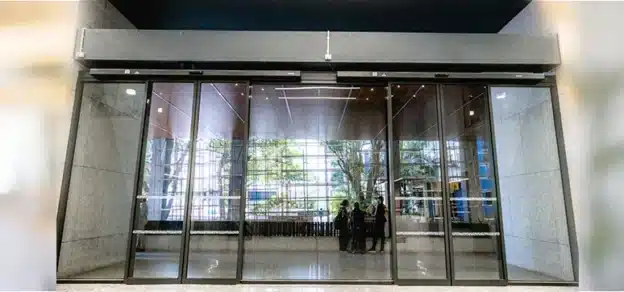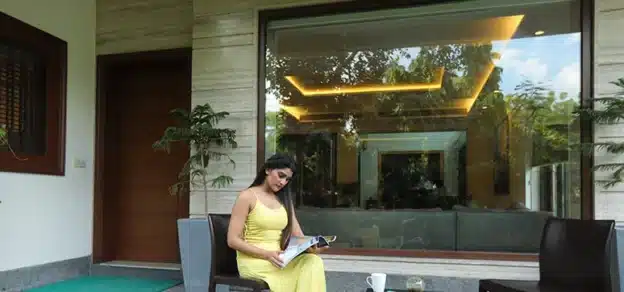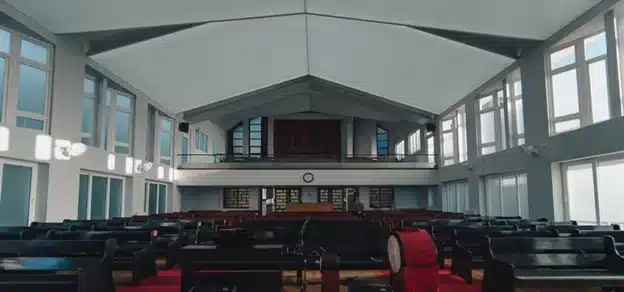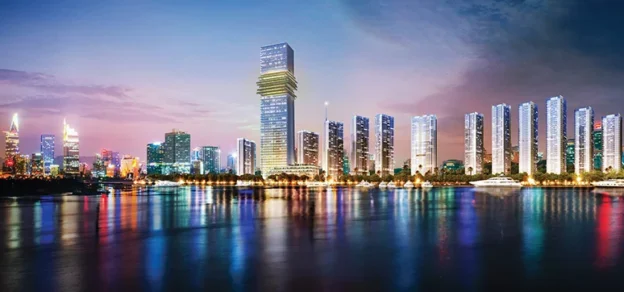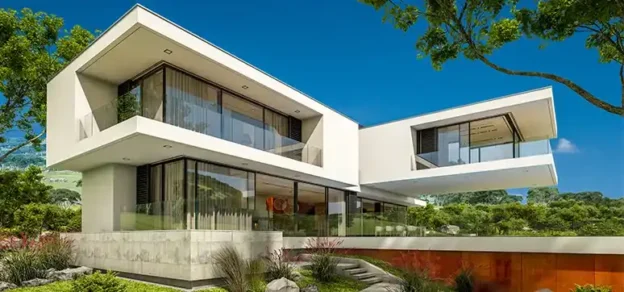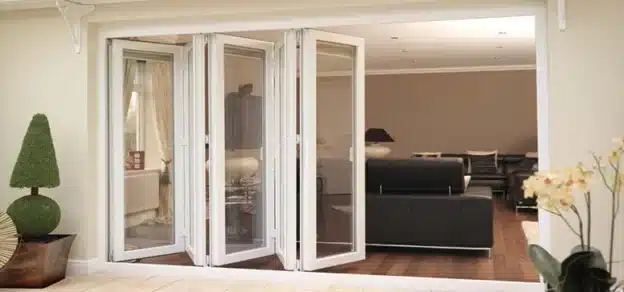Each day, the indoor air in a building is polluted by a number of sources: the occupants (breathing, sweating), their activities (cooking, showering, heating, smoking, etc.) and also by the building itself and its furnishing (radon, volatile organic compounds, paint, glue, varnish, detergents, etc.). With an increasing trend towards airtight construction, this can cause problems with humidity, CO2 and various other substances staying inside the home as adequate ventilation is not considered. This is why we must regularly and properly ventilate our buildings, using demand controlled ventilation.

As a matter of fact, excessive insulation and inadequate ventilation create a dead and stale air which accumulates mites, molds, viruses, bacteria, as well as moisture and harmful chemicals. It has been proven that breathing larger amounts of these pollutants for even the shortest period will affect our health in the long-term.This may cause health problems (irritation of eyes, nose and throat, headache and sickness, among other issues) as well as comfort problems (smell, condensation, moisture).
Ventilation
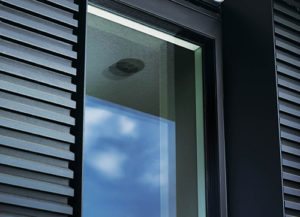
Humans do need about 20 m³ of fresh air to feel well. Fresh air, full of oxygen, that gives us energy, improves concentration and avoids sleepiness. In the past, ventilation was not an issue, as most of the old buildings had their own natural light and ventilation through cracks in the construction. Today, our houses and other buildings are constructed as airtight as possible and architects and builders need to include elements, guaranteeing the indoor air quality is not poor.
Many people still believe that opening windows from time to time is sufficient. However, the effect of opening windows is only temporary and ventilation through open windows is uncontrollable, and therefore, wasting energy. In addition, they lead to other problems, such as noise, the risk of burglary, the intrusion of insects, etc. Many buildings are also equipped with air-conditioning systems.

People or building operation and maintenance companies are, however, setting these air-conditioners with energy savings, which means they are just recirculating already cooled air, without combining it with fresh outside air. As a consequence, the pollutants concentrate inside the room. A controlled ventilation, 24 hours a day, is the only effective and secure solution to obtain a good indoor air quality and a healthy indoor climate.
The A, B, C(+), D of Ventilation In general, there are four different ways of ventilating, all of them based on the same three principles: the supply of fresh air in the dry rooms, such as living room, bed room; the drive of air through the dwelling via halls by means of louvres in the doors; and the extraction of filthy air in the wet areas, e.g. toilet, kitchen, bathroom. These ventilation systems are classified by the way the air is supplied and extracted.
A: Natural Supply and Extraction
The most easy and cheap way of ventilating, which does not always respect the standard and cannot be called ‘controlled’ ventilation at all. The circulation of air happens in a natural way based on the differences in pressure. The air enters the dwelling through adjustable openings in windows, walls or the roof.
B: Mechanical Supply and Natural Extraction
Using ventilation system B, the fresh air supply happens mechanically and the air is circulated throughout the dwelling via integrated ventilation channels. The mechanical supply of air results in a so-called chimney effect, resulting in the automatic extraction of air in a natural way. This kind of ventilation is however barely used in dwellings. Why? The answer is simple: the ventilators of the system are constantly using electricity. The system cannot be stopped and is therefore less interesting than a demand-controlled ventilation system C+ or D.
C: Natural Supply and Mechanical Extraction
This is a system, which can be easily integrated in new builds and renovation. The installer only has to integrate a minimum of ducts and apart from the regular maintenance of the extraction louvres and the self-regulating window vents, no further maintenance is needed.
C+: Natural Supply and Demand Controlled Extraction
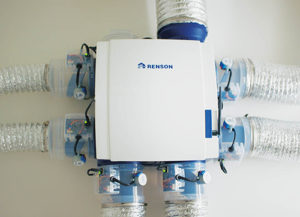
The difference between C and C+ is the demand-controlled extraction, using modulating extraction louvres. The ventilation level is adapted based on the way of living. As the ventilation level is never higher than really needed, energy consumption can be minimised. This kind of systems use a central extraction unit, combined with extraction louvres in the various wet rooms. Ventilation system C+ combines the constant supply of fresh air through self-regulating vents and the transit via door grilles with the extraction on-demand of polluted air in the wet as well as dry rooms. A central extraction unit with a powerful motor is equipped with control modules that can ensure proper ventilation of any connected room at all times.
As polluted air (with an excessive amount of CO2) also has a negative effect on the quality of sleep during the night, it is important that it is not only extracted in the wet rooms, but also in bedrooms. And that is why it is important to adapt the ventilation level to the needs of the residents in an intelligent way, based on measuring CO2, humidity- and / or VOC-levels through dynamic sensors.

The principle is simple: to guarantee an optimal air quality in the house, without having to deal with excessive energy costs, demand-controlled ventilation is recommended. That means that there will be ventilated more in those rooms were residents are more present.
When they are watching television, the extraction level is raised in the living room. When they go to sleep, the extraction in the living room is decreasing and more polluted air is extracted in the sleeping rooms. As a matter of fact, the ventilation system follows the habits and presence of the residents.
D: Mechanical Supply and Mechanical Extraction
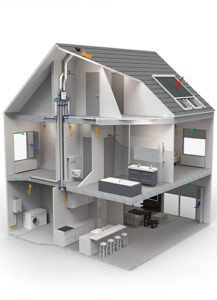
System D is based on the mechanical supply and extraction of air by means of ventilators. Both the supply and extraction can be controlled, but you need to have a double duct net: one for the supply in the dry rooms and one for the extraction in the wet rooms. In most cases, systems with heat recovery are used.
The supplied air is then heated using the warmth of the extracted air. This system has its advantages in some cases, but is also more expensive as you need to have more ducts and you have to take into account the maintenance and change of filters on a regular basis in order to prevent health problems.
Special focus on demand controlled ventilation (DCV) Demand controlled ventilation (DCV) allows air to be circulated according to a building’s use and occupancy. DCV uses sensors to monitor and measure ambient conditions and feed real-time data back to a controller, which adjusts the fan speed modulating the ventilation rate to match the use and occupancy of the building.
In this case, ventilation rates are kept to a minimum when nobody is in the building or in a specific room. The ventilation is increased when people are entering a specific area of the building. This results in a good air quality in every room of the building and reduces energy consumption in a significant way.


